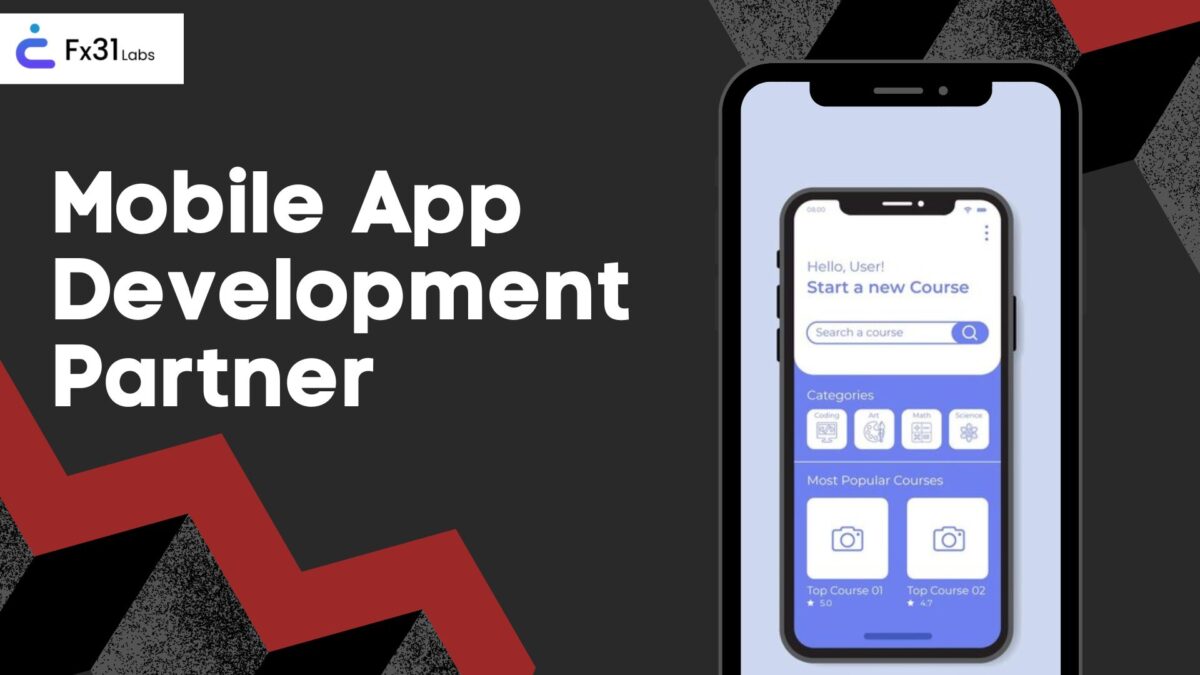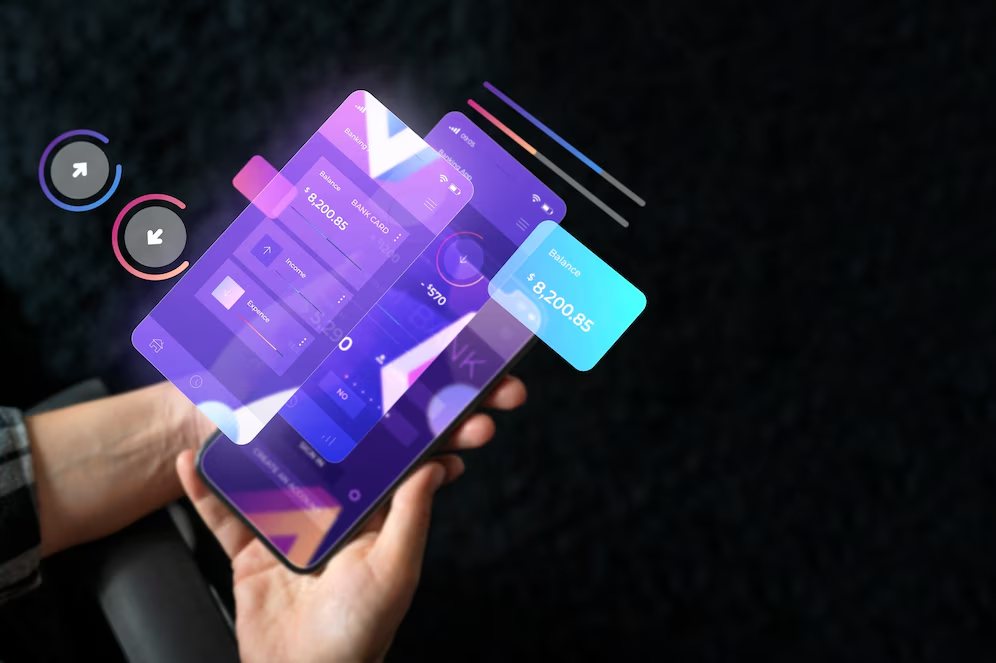How to Choose the Perfect Mobile App Development Partner

Introduction

Businesses are increasingly turning to Mobile App Development to reach a wider audience,enhance customer engagement ,boost operational efficiency,and stay ahead from the competitors. Mobile Apps offer a direct or personalized channel to connect with customers.
Beyond Connection mobile apps help businesses increase their brand visibility , generate revenue for the company , and customer loyalty.
Choosing Partner for Mobile App Development
1. Understanding Your Needs
While planning to develop a mobile application, or when looking for a mobile app development company to work with, it is relevant to give some definitions to the prospective task. Here are some questions to consider:Here are some questions to consider:
- The first question that is often asked about any application is: What is your application going to be used?
- Who do you think your target market will comprise of?
- What additional features/functionalities would you like it to have?
- What is your budget?
- What is your timeline?
If you have detailed answers to these questions then you will be in a better position of articulating your vision to would-be development partners.
2. Researching Potential Partners
After identifying what you need for your project, it is now about the time to look for mobile app development companies. Here are some steps to guide your research:Here are some steps to guide your research:
a. Online Search:
Search on the internet through search engines to get the Best app development companies. Thus, using such search terms as “mobile app development” or “app development”, you will be able to single out the best companies in the industry.
b. Portfolio Review:
Go to a partner’s Web site to look at a portfolio. Evaluate other projects that were completed by similar companies and see how they did their job. Focus on the kind of layout you implement by design, commonly referred to as the user interface or UI and the user experience or UX design since it influences the success of the app.
c. Client Testimonials and Reviews:
Look at the Clutch, GoodFirms, and Google Reviews to find out testimonials from clients. This knowledge can contain useful data concerning the reliability of the company, its communication abilities, and its efficiency.
d. Case Studies:
Check a website for case studies of their work. Interviews ensure one gets to understand how they have developed their case, their problem-solving skills and how they were able to manage issues in their previous projects.
3. Evaluating Technical Expertise
Technical competency is one of the aspects that you should consider when selecting a mobile app development company. Here’s what to consider:
a. Technology Stack:
Make sure the company that you are working with is fluent in the technologies that you will be using on your project. This might include native development (iOS, Android) or cross-platform frameworks like react native or flutter.
b. Development Process:
Ask them how they get to their innovations; more to it, ask them how they created their invention. A recommended life cycle like Agile or Scrum guides the process and assumes that you should be updated frequently on the project’s progress.
c. Quality Assurance:
When communicating, inquire about quality assurance procedures. An efficient QA process enables an app to receive thorough testing in terms of the presence of bugs, performance, and security.
d. Post-Launch Support:
Continuous support is crucial once you have launched your app in the market and it is selling. Make sure to advise the company to offer maintenance and support services that would be of help in cases after launching the product.
4. Assessing Communication and Collaboration
Since this was a partnership between the two organizations, it was important that they worked hand in hand in order to ensure the project was a success. Here’s how to evaluate this aspect:Here’s how to evaluate this aspect:
a. Initial Contact:
It is also important to notice the company’s attentiveness during the first contact phase. They also use clear and prompt communication as a sign.
b. Project Management Tools:
Ask them concerning the tools they apply in managing the project. Such platforms as Jira, Trello, or Asana support clear presentation of communication and project management procedures.
c. Regular Updates:
Make sure the company constantly reports the status of the project to the management. It is recommended that people get together for meetings at least once a week, or at least twice a week, to ensure that all the members are on the same page and so that any arising issues can be dealt with as soon as possible.
d. Cultural Fit:
Take into account the compatibility of the cultural difference between your team and the development partner. When potential employees are in harmony with the rest of the organization, productivity increases due to increased cooperation.
5. Past Projects and Self generated References
Before signing a partnership contract with a particular developer, this or that company’s experience should be studied, and it is crucial to talk to the clients, who have already cooperated with the candidate.
a. Request References:
The customer should request references from the company of clients that have implemented similar changes. Interacting with such clients can also help in getting first-hand information on how the clients feel concerning the company.
b. Analyze Past Projects:
Identify previous projects for their design, practicality, and ergonomic value to the users. Of course, this will give an approximate understanding of the quality you are likely to receive.
c. Success Stories:
Hunt for examples where this company assisted their clients in attaining their set objectives. This proves their capacity to produce outcome.
6. Understanding the Cost Structure
Budget is one of the determinants while selecting a partner in developing an application for mobile devices. Here’s how to navigate the cost aspect:Here’s how to navigate the cost aspect:
a. Transparent Pricing:
Make sure that the company’s prices are as transparent as possible. These are some of the risks associated with hidden costs as they contribute to the overall increase of the cost of the project with the result of extending the time required to complete the project.
b. Detailed Proposal:
Ask for a breakdown of services to be provided, the tasks to be done, the time frame and the total charges. This will let you know what precisely you’re agreeing to pay for and that will assist in managing your expectations.
c. Value Over Cost:
Though price is a factor, it plays a secondary role to it which is ‘value’. The cheaper one might be of low quality, hence the costs associated with fixing the menace might be extremely high in the future.
7. Ensuring Security and Confidentiality
Whenever one is creating a mobile application, security and especially privacy are the order of the day. Here’s what to consider:
a. NDA Agreement:
Check that the company is willing to agree on a Non-Disclosure Agreement (NDA) to keep your concept and data secret.
b. Data Security Practices:
Find out their policy on protecting data and information. An organization of that caliber will ensure they have laid down measures in order to protect your app and/or the users.
8. Evaluating Post-Development Support
An understanding of the post-development support in app evolution is important to know how to pave the way to success. Here’s what to look for:Here’s what to look for:
a. Maintenance Services:
Make sure the company is willing to continue servicing your app to make sure everything is in order.
b. Bug Fixes and Updates:
Ask about their policy on Bug fixes and updates. Regarding problems, a reliable partner will fix them as soon as possible and keep your app synchronized with the new OS versions.
9. Considering Innovation and Future-Readiness
Some of the strategies relevant to competitiveness of your app include: Innovation, The app must be designed for the future. Here’s how to evaluate this:Here’s how to evaluate this:
a. Innovation Track Record:
Try to identify a company that should really be innovative. This shows their capacity in the dynamics of the industry in terms of the trends in the market.
b. Future-Proofing:
Make sure that the company can launch reaction flexible and scalable technologies for your app in the future.
10. Making the Final Decision
Having assessed partner candidates on the above criteria, it is now possible to move to the final choice. Here’s how to proceed:
a. Compare Shortlisted Companies:
Evaluate the shortlisted companies concerning technological competence, organizational communication, previous work, fee model, and others that include the post-development support plan.
b. Trust Your Instincts:
Go by your gut feeling and select the company where you are most comfortable to be with. Clearly, the partners must be in a good working terms for the partnership to produce fruitful results.
c. Start Small:
In the event that you are not willing to engage in long-term co-partnering, then it is reasonable to begin by engaging in a minor project, or entering a preliminary stage. This will enable you to get a feel of their capabilities before going all out.
11. Assessing Industry Experience
Thus, learning from the industry can be a strong asset that can have a major impact on the developmental process and the resulting product. Here’s how to evaluate it:Here’s how to evaluate it:
a. Industry-Specific Expertise:
It is recommended to find a partner that has prior experience in the industry you operate in. Thus, they will have a clearer vision on your market, ideal customers, and problems specific to your kind of business.
b. Relevant Case Studies:
Provide details about unsuccessful project experiences that are also in the industry of your choice. Through this, you will be in a position to establish the kind of thinking skills they have towards solving problems and the kind of solutions that suit industries.
c. Network and Resources:
An experienced partner will already have all the contacts and facilities; such as the third party vendors and consultants which could be useful for a project.
12. Innovation and Creativity
Amidst fierce competition, skills, ideas and imagination are a great asset in designing an outstanding application. Here’s how to gauge these qualities:Here’s how to gauge these qualities:
a. Innovation Portfolio:
Socio Delight also recommends that by learning through their portfolio one can note down some of the approaches that Socio Delight have used in developing the application which are unique alike. Search for features which exclude others, technologies implemented and innovative personalities.
b. Awards and Recognitions:
Look for evidence of the firm having won any awards or being accredited in their industries as noteworthy in innovation and quality. Of course, this may serve as a good test of their creativity.
c. Ideation Process:
Ask them about the process that they go through while coming up with their ideas. If a company does not restrict creativity and inventiveness in early and subsequent stages of the process, it is very possible to have a unique and enjoyable app.
13. User-Centered Design
As a result, for an app to be successful it must be user friendly or as it is commonly referred to as UX. Here’s how to evaluate a partner’s focus on user-centered design:Here’s how to evaluate a partner’s focus on user-centered design:
a. UI/UX Design Expertise:
Thus, make sure that the company has a solid UI/UX design department. It is their responsibility to make sure that the developed mobile app is user-friendly and easy on the eye.
b. User Research:
Inquire about the kinds of research they conduct among the users of the product. With adequate user research in place, a firm is in a better position to develop an app in alignment with users’ wants and needs.
c. Usability Testing:
Ask them about their activity in usability testing. User testing should be done often with users while the development of the product is still ongoing so that any usability problems can be noticed and solved on time.
14. Scalability and Flexibility
As your business progresses, your app should be able to expand based on your business’s changes as well. Here’s how to ensure scalability and flexibility:Here’s how to ensure scalability and flexibility:
a. Scalable Architecture:
Make sure the company lays down a scalable structure to the application so that it can be upgraded in the future and handle more users.
b. Flexible Development Approach:
An adaptive process like Agile or Scrum development involves feedback and improvements in progression, transforming according to project conditions during the process.
c. Future-Proof Technologies:
Enquire about the technologies that they apply today and whether your firm is ready for those to be merged in future. Selecting a partner that is in trend with the current technology guarantees your app stays relevant.
15. Project Management and Timeliness
Project planning and control and due consideration of elapsed time are important factors that may be vital in the running of your developing app project. Here’s how to evaluate this:Here’s how to evaluate this:
a. Project Management Practices:
Ask about their experience in project management and the strategies they use. This boasts of better planning, implementation and monitoring of the project when undertaken with a structure.
b. Timelines and Milestones:
Make sure timelines and the sequence of events is well stated with the company. This aids in monitoring the amount of work done as well as timely completion of the project.
c. Risk Management:
Find out more about precautions they are willing to take. The next major strength is anticipating and managing risks that might arise, which allows maintaining the project’s progress despite the challenges.
How Fx31 Labs is Right Partner
1. Proven Expertise and Experience :- Fx31 labs has a wide range of successful projects from different types of industries,Fx31 uses technologies like AI , machine learning , AR/VR. These technologies help ensure it remains competitive and future-proof.
2. User-Centered Design :- In Fx31 we make sure that the mobile app is not only performing great in functionality but also in designing our dedicated design team conducts thorough user research and usability testing to create an engaging and user-friendly interface.
3. Comprehensive Services :- In Fx31 you will get End-End app development service which means from initial stage like planning to post launch like after the launch of application we are there to support you.
4. Transparent Communication :- In Fx31 we believe in transparent communication. We give each and every update about your project through various channels as you also know what is going on and what are the updates in your project.
Conclusion
Selecting the appropriate partner for the development of mobile applications is not a simple process and it considers several aspects. As you know, the problem of choosing a partner can be quite complicated and starts with the assessment of your needs and, further, the search for potential partners and ends with the careful assessment of the competitors’ technical skills, communication, industry experience, innovations, and compatibility in the long term partnership that all contribute to the success of your app. If you pay attention to the guidelines from this blog, you must understand the detailed factors which will help you make a decision of choosing a development partner who will not only be capable of meeting the technical specifications, but also share the core values and business objectives of your company. Right partner enables one to develop or transform an app into a success story thus creating business value in the current complex and evolving ICT environment.
Also Check out your latest blog about Future of Gen AI
